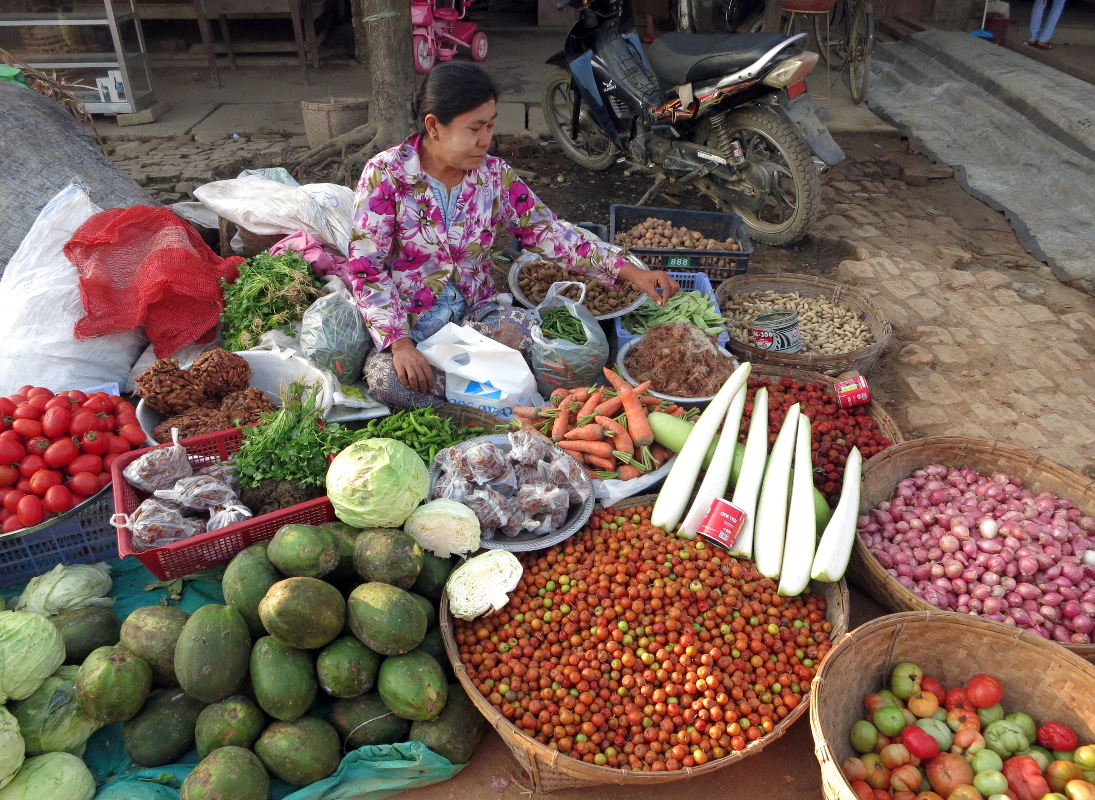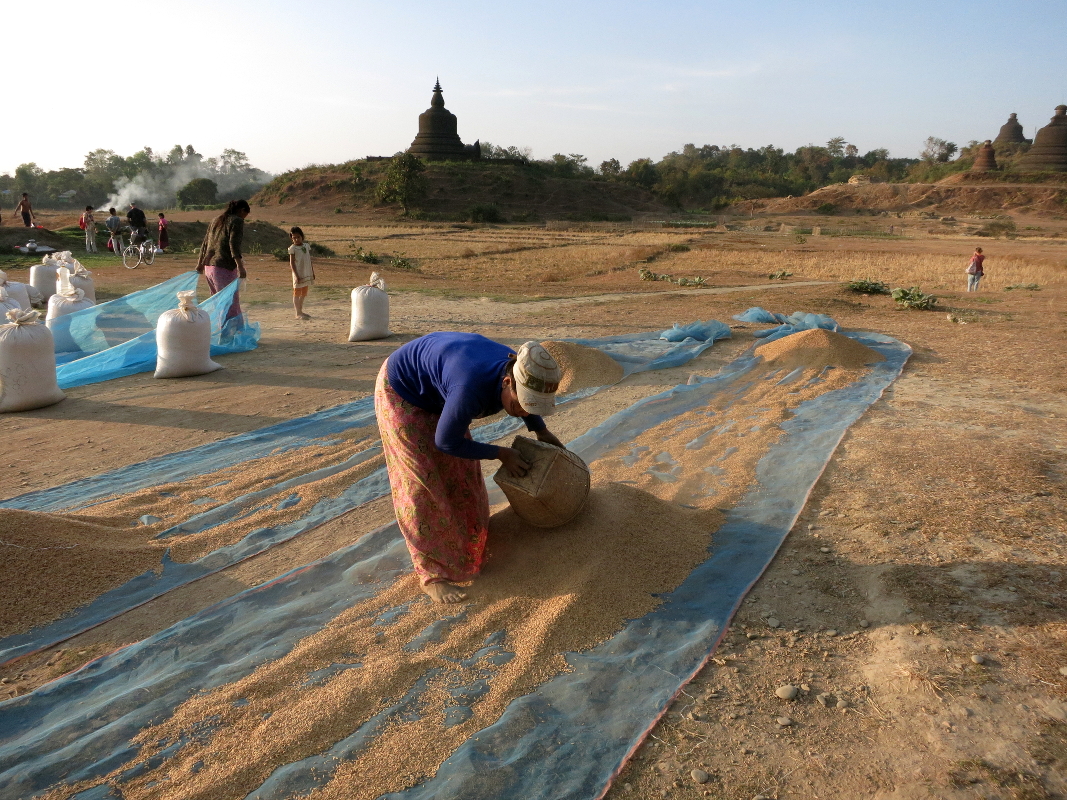Trip 2015-16. Day 321. Myanmar, Chin village

Independent visit to Chin village Today the two of us planned to leave Mrauk-U and travel up the Lemro (Lay Myo, လေးမြို့မြစ်) River independently to a Chin village. We started at 11 in the morning from Mrauk-U trying to negotiate a fare to the river-side jetty. As always people were quickly interested in our need and we had offers of bicycle carriage for 5000 kyats and scooter (6000 kyats) and finally a safer motor-taxi (also 6000) as we knew much of the road was very poor. We arrived to Sin-O, a small village on the bank of the river which both local and tourist boats use, 8 km from town. Fortunately, there was some river traffic and a boat came in with cargo of firewood, which agreed to take us north to one of the villages. We sailed for 1.5 hrs and began to reach the villages our fellow traveler had suggested. We passed Paraghi and Kreischo and stopped at Sen-Shuew-Jew village. The driver asked for 2000 kyats (it seemed reasonable because we saw a local woman who traveled with us f

